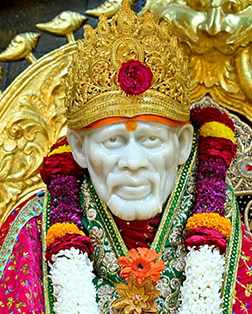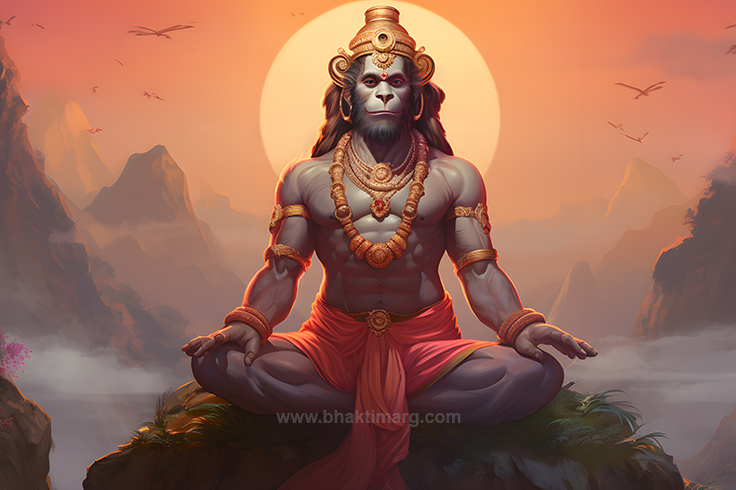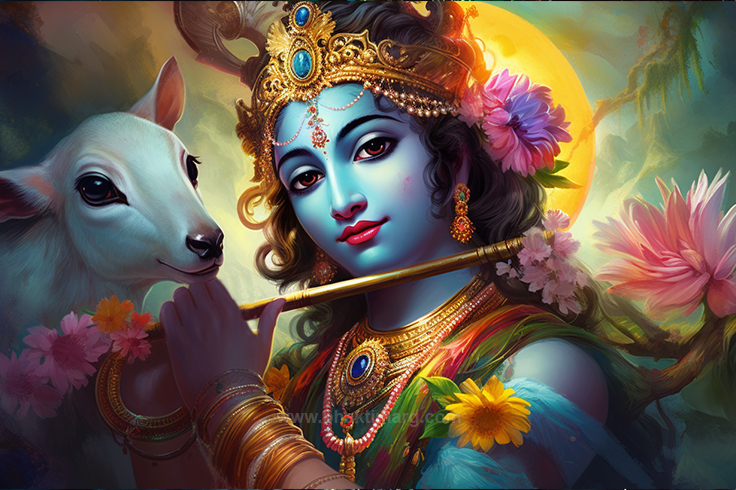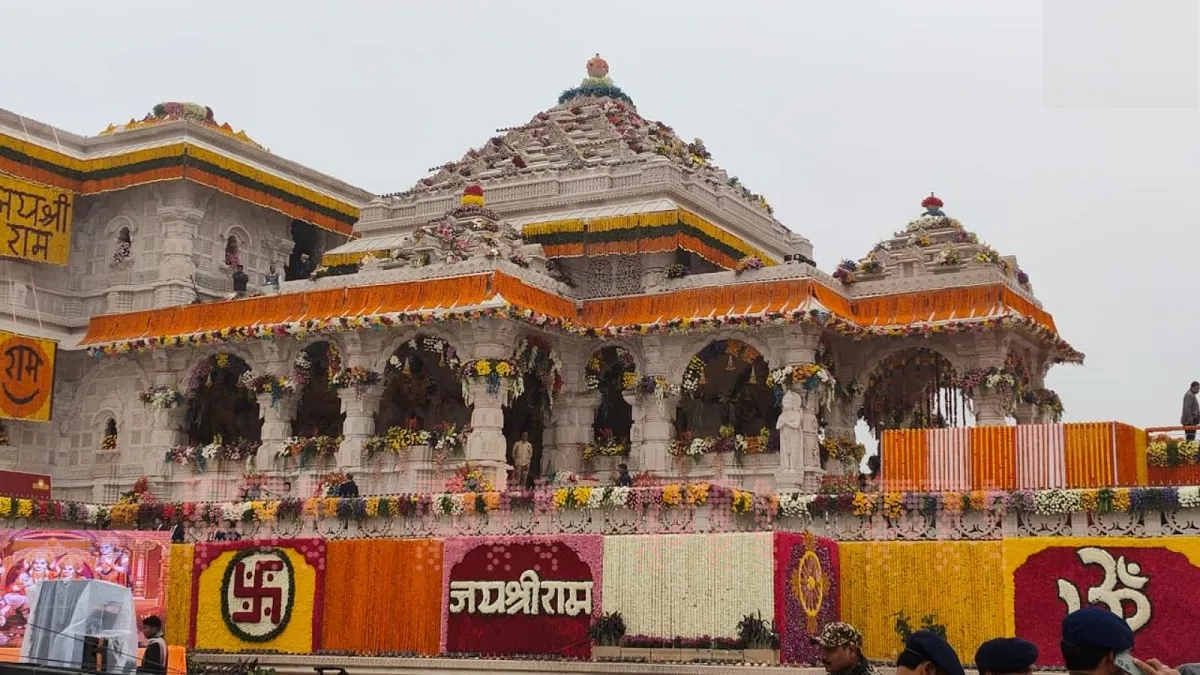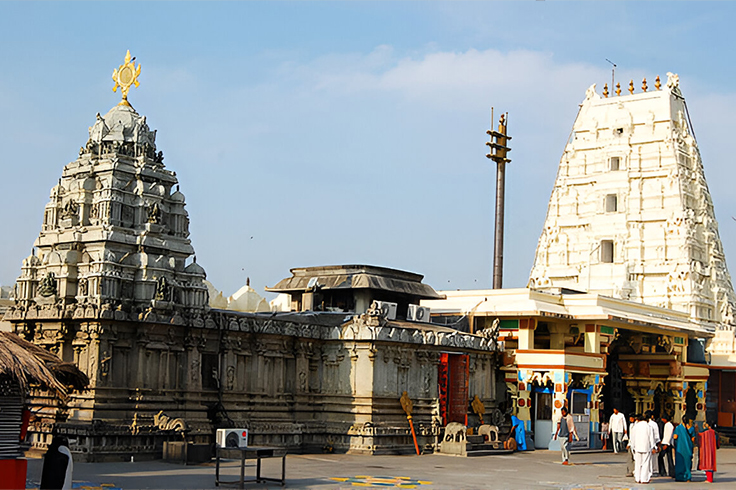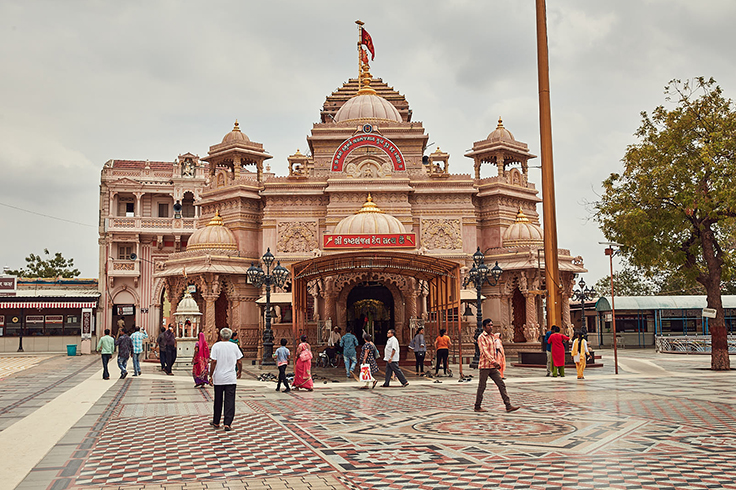
Who was Sant Tulsidas and why is his Jayanti celebrated?
Who Was Sant Tulsidas and What Made Him So Revered?
Sant Tulsidas was a 16th-century Hindu poet-saint and ardent devotee of Lord Rāma. He is best known for composing the Ramcharitmānas, an Awadhi retelling of the Sanskrit Rāmāyana, as well as the Hanumān Chalīsā, a forty-verse hymn to Lord Hanumān. Writing in the vernacular Awadhi dialect, Tulsidas brought ancient stories to common people. His poetry combines deep Bhakti (devotion) with vivid imagery – Britannica notes the Ramcharitmānas “is distinguished by its great expression of love for a personal god and by its exemplification…of ideal conduct”. Revered for his humility and piety, Tulsidas’s verses are still recited in homes and temples across India.
According to tradition, Tulsidas was born in the village of Rājapur (in present-day Uttar Pradesh) to parents Atmārām and Huḷasī Devī in 1532 CE. (Some sources give a slightly earlier birth-year of 1497, but most agree on mid-1530s.) He spent much of his life in Vārānasi (Benares); in fact the Tulsi Ghāt on the Ganges is named after him, and the Sankat Mochan Hanumān Temple there is believed to have been founded by him. He died in 1623 CE at the age of about 90. Throughout his life, Tulsidas championed devotion over ritual, urging that heartfelt worship of Rāma (through chanting, singing and remembrance) was the surest path to spiritual grace. Today he is acclaimed as one of Hindi literature’s greatest poets, and his works are “read and worshipped with great reverence in every Hindu home in Northern India”.
When Is Tulsidas Jayanti in 2025?

Tulsidas Jayanti falls on the Saptamī (7th) day of the Śukla (waxing) Paksha in the Hindu month of Śravaṇa. In 2025 this corresponds to Thursday, July 31, 2025. (By the lunar calendar, this is Śravaṇa Śukla Saptamī.) Devotees observe his birth anniversary with special prayers and kīrtans (devotional singing). Temples dedicated to Lord Rāma and Lord Hanumān schedule continuous readings of the Ramcharitmānas, bhajan recitals, and chanting of the Hanumān Chalīsā to commemorate his Jayanti. Children and scholars in spiritual schools also organize readings or plays (rām-līlā) based on the Ramcharitmānas, celebrating the saint’s gift of the Rāma story to the people.
What Is the Date of Birth and Death of Tulsidas?

Traditional accounts give Tulsidas’s birth year as 1532 CE in Rājapur (Uttar Pradesh), though some sources record it as 1497. He was born on Śravaṇa Śukla Saptamī according to the lunar calendar. His original name was Rambola – legend says even as an infant he uttered “Rāma” instead of crying, signaling his destiny to serve Lord Rāma. Tulsidas passed away in 1623 CE at Āsīghāt in Vārānasi. Thus his lifespan is generally given as c.1532–1623. During his long life he authored many devotional works besides the Ramcharitmānas – such as the Vinaya Patrikā, Dohāvalī, Parvati Mangal and others – and spread the message of Rāma’s rājyadharma (righteous rule) far and wide.
Why Is Tulsidas Jayanti Celebrated Every Year?

Tulsidas Jayanti is not merely the observance of a birth date; it is a celebration of his enduring spiritual legacy. Sant Tulsidas democratized the sacred tale of Lord Rāma by rendering it in the vernacular Awadhi so that common people could understand and sing it. By doing so, he broke caste and class barriers around scriptural knowledge. His poetry and teachings emphasize bhakti (devotion) as the true path to God, and exemplify ideal virtues: love, humility, moral duty and compassion. On Jayanti, devotees express gratitude for this contribution by rereading his works and rededicating themselves to the values he taught.
Temple festivals on this day recall that Tulsidas brought Rāma’s story to life. For example, it is said that through the Ramcharitmānas the devotion of Rāma flowed into everyday life, inspiring the annual Rām-leelā performances (theater enactments of Rāma’s life) throughout North India. In sermons and satsangs (spiritual talks), teachers remind people of his message: devotion and the name of Rāma cleanse the heart. In this way, celebrating his Jayanti is a tribute to the saint who “composed the epic Ramcharitmānas, a retelling of the Ramayana in the vernacular” so that its eternal lessons reach every home.
Tulsidas’s Literary Contributions and Style
Tulsidas’s works blend deep philosophy with folk simplicity. He was a scholar of Sanskrit but purposefully chose the Awadhi dialect so ordinary villagers could relate to the divine story. The Ramcharitmānas follows Valmiki’s Ramayana plot but freely expands it with devotional teachings and local color. In fact, Britannica notes it is distinguished by “great expression of love for a personal god” and models of ideal conduct. Tulsidas wrote in lyrical meters – using dohas (couplets) and chaupāīs (quadruplets) – making his verses easy to chant and memorize.
For example, one famous chaupāī from the Bālakāṇḍa describes saints at Chitrakūṭ ghāṭ (riverbank) crowding around Lord Rāma to receive sandalwood tilak:
- “Chitrakūt ke ghāṭ par bhayo santan kī bheer, Tulsi chandan ghise, tilak det Raghuveera”.
This vividly shows Tulsidas painting Rāma in a human scene, accessible to all devotees. His language is simple and colloquial, yet charged with bhakti. The Hanumān Chalīsā likewise uses clear imagery to praise Hanumān’s virtues and Rāma’s name. It declares that whoever chants it with full devotion will receive Hanumān’s grace.
Tulsidas’s compositions belong to the saguṇa Bhakti tradition – worship of a God with form and attributes. He frequently highlights grace (kripa) of the Lord through personal devotion. For instance, in the forty-third chaupāī of the Hanumān Chalīsā, he affirms Hanumān’s mighty powers and unwavering loyalty to Rāma. Through countless couplets he teaches that faith and sincerity matter more than ritual. His works often begin with dohas in praise of Shiva or Rama as his guru (spiritual teacher), then unfold the narrative with humility and love.
In modern times Tulsidas’s impact has even been recognized globally: in 2024, UNESCO inscribed a Tulsidas-era manuscript of the Ramcharitmānas on its Memory of the World register, highlighting the text’s cultural and literary significance. Moreover, Tulsidas’s writings gave birth to living traditions such as the annual Rām-leelā folk plays and Sankat Mochan Temple kīrtans in Varanasi. His style of simple devotion continues to influence Hindi and other Bhakti literature. In short, Tulsidas wove deep theology into resonant poetry – a style that has inspired countless devotees.
What Are the Key Teachings of Sant Tulsidas?
Sant Tulsidas’s core philosophy centered on unwavering devotion to God and righteous living. Through his poetry and life, he taught the following key lessons:
- Devotion over Ritual. True bhakti in the heart is more powerful than mere external ceremonies. Tulsidas urged worship of Lord Rāma with love and simplicity. He famously implied that remembering God’s name (e.g. chanting the Hanumān Chalīsā) brings grace: “Whoever chants it with full devotion will have Hanumān’s grace”.
- Service and Compassion. Serving others selflessly is service to God. Tulsidas lived the lesson of compassion – once healing a murderer through Rāma’s prasāda – showing mercy even to those shunned by society. Devotees say he would feed the hungry and fold his own ascetic cloths to clothe the poor. His Vinaya Patrikā (a supplicatory poem) repeatedly asks Rāma to use him to serve all beings.
- Truth and Duty (Dharma). The epic of Rāma exemplifies dharma (righteousness). In his works, Tulsidas highlights truthfulness and duty: Rama is portrayed as the ideal king, husband, and brother. Tulsidas teaches that we too must act according to our responsibilities and moral code.
- Power of the Divine Name. A constant theme is the power of Naam (God’s name). Chanting Rāma’s name or remembering Him can purify the mind. The Hanumān Chalīsā itself is a mantra: reciting Hanumān’s glories is a form of devotion, promising protection and strength.
- Humility and Simplicity. No matter one’s learning or status, humility is a virtue. Tulsidas often portrayed sages and devotees in humble circumstance rather than proud scholars. His own life – leaving royal comforts to become a wandering ascetic – underlined that humility before God and guru is essential.
These timeless teachings – devotion, service, righteousness – are why Tulsidas’s words continue to inspire millions even after four centuries.
How Is Tulsidas Jayanti Celebrated Across India?
Temples and Bhakti groups mark Tulsidas Jayanti with a variety of devotional activities. Common practices include:
- Reading Ramcharitmānas – Many devote one or more days to reading or listening to the Ramcharitmānas from start to finish. Community or household recitations of its verses (often by chapter) are held from dawn till night.
- Chanting Hanumān Chalīsā and Bhajans – The day is filled with music. Hanumān Chalīsā is chanted in homes and temples, and groups sing Rāma bhajans (devotional songs) and kīrtans. Special bhajan evenings are organized, often continuing all night in major temples.
- Temple Decorations – Shrines of Lord Rāma, Sītā and Tulsidas are adorned with flowers, lights and colorful banners. Portraits or statues of Tulsidas are placed in the central aisle. Devotees may also set up Tulsi plants (sacred basil) as a symbol of Tulsidas’s devotion.
- Satsangs and Discourses – Religious leaders and scholars give talks on Tulsidas’s life and the spiritual messages of his works. Satsang gatherings may include dramatized readings (Rām-leelā) or staging of scenes from the Ramcharitmānas to illustrate his teachings.
- Charitable Acts – In his honor, many people perform daan (charity). Feeding the poor, distributing clothes to the needy, and donating essentials to villagers or temple trust organizations are customary on this day. It is believed that serving others is serving Rāma, reflecting Tulsidas’s own acts of kindness in life.
Regional Variations: The scale of celebration varies by region. In Vārānasi and Uttar Pradesh, where Tulsidas lived, events can be especially elaborate. The Sankat Mochan Hanumān Temple in Vārānasi sees large crowds for kīrtan and Ramayana recitals. In many North Indian villages and cities, Rām-leelā troupes stage all-night performances of episodes from the Ramcharitmānas.
In contrast, in South India (Tamil Nadu, Karnataka, etc.), traditional focus is often on the Kamban Ramāyana or other local forms of Rāma devotion, so Tulsidas Jayanti is observed more quietly. Some temples and cultural groups still commemorate it by reading excerpts of his works (often in Hindi or translation) and singing the Chalīsā. However, one unifying factor is that the Hanumān Chalīsā transcends regional boundaries – it “is recited by millions of Hindus every day” – so on Jayanti you will hear it chanted from Delhi to Madurai. In western India (Gujarat, Maharashtra) or cities nationwide, Tulsidas’s Jayanti is marked by Hindi-speaking communities and Hanumān temples hosting special satsangs.
Conclusion
Sant Tulsidas was a beacon of Bhakti who used his poetic genius to bring the divine story of Lord Rāma into the hearts of all people. His writings – the Ramcharitmānas and Hanumān Chalīsā – continue to be among the most beloved Hindu scriptures. Celebrating Tulsidas Jayanti on July 31, 2025 gives devotees an opportunity to remember his life and “try to embody his values of devotion, humility, and compassion” in their own lives. As one guide notes, Tulsidas has “been acclaimed as one of the greatest poets in Hindi, Indian, and world literature” – a testament to why his legacy endures.
In observing this day, Hindus of all ages reaffirm that Rāma’s story and righteousness belong to everyone, thanks to Sant Tulsidas’s life work. By reading his verses, singing his hymns, and living by his teachings, devotees honor the saint who made centuries-old wisdom freshly relevant to modern hearts.






